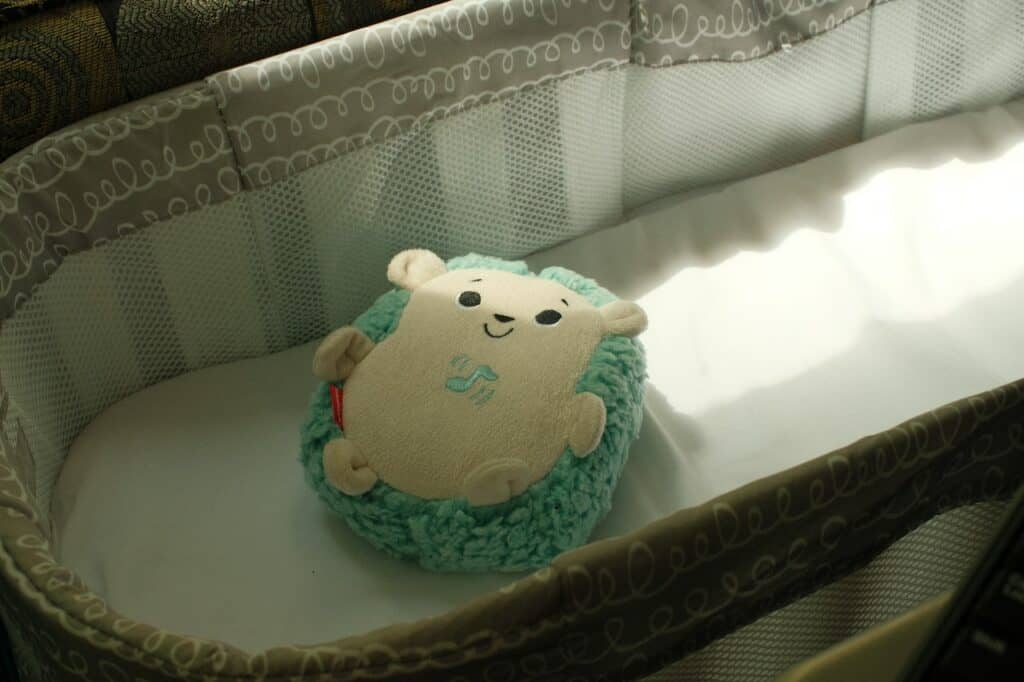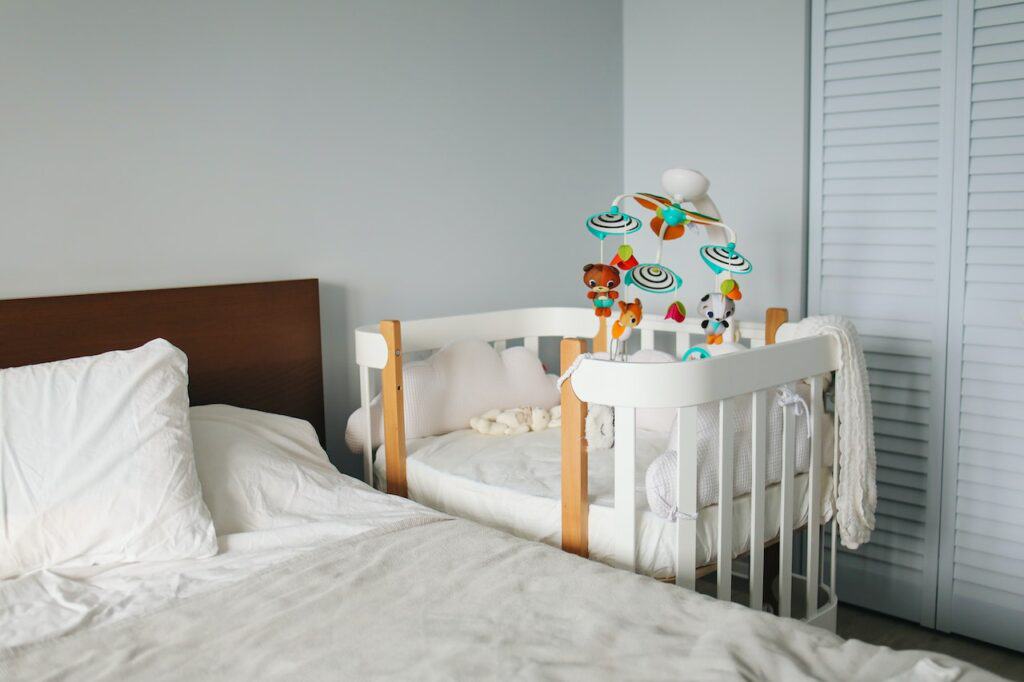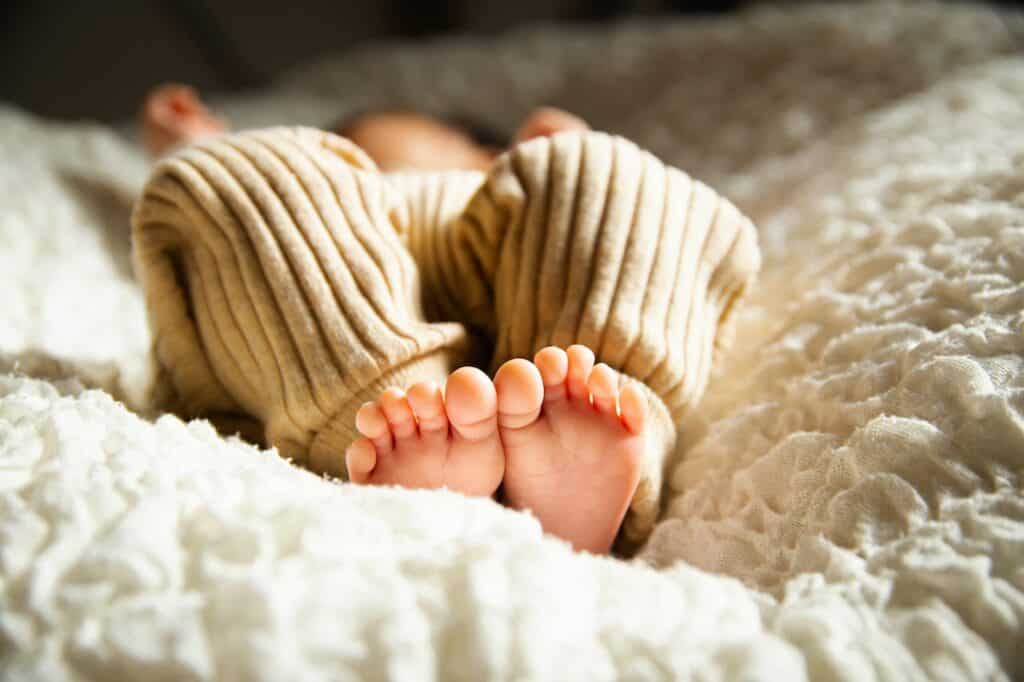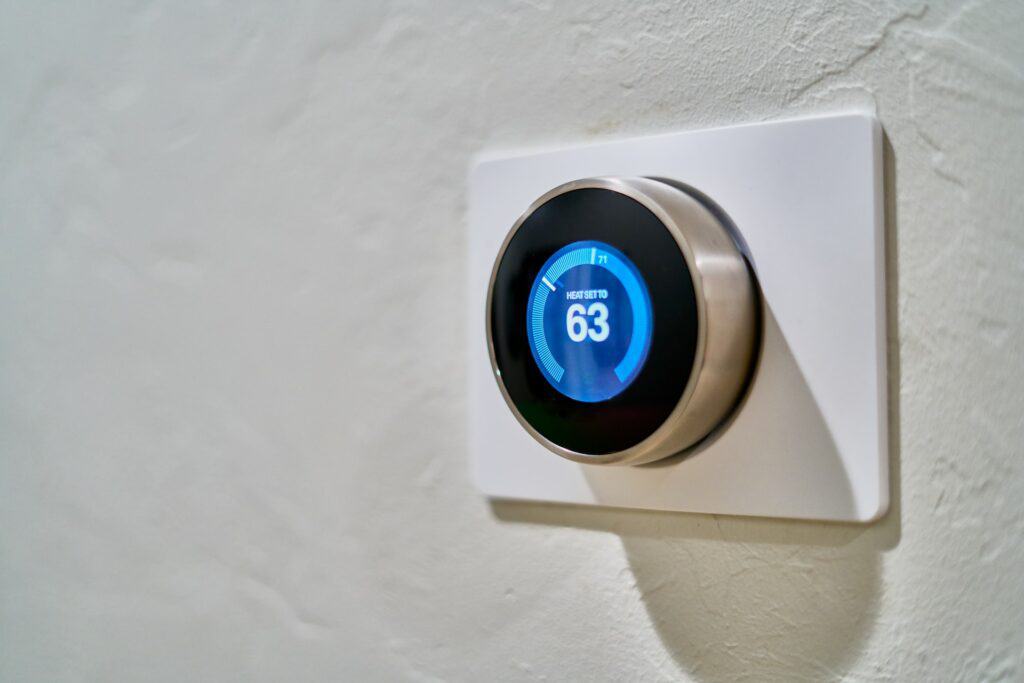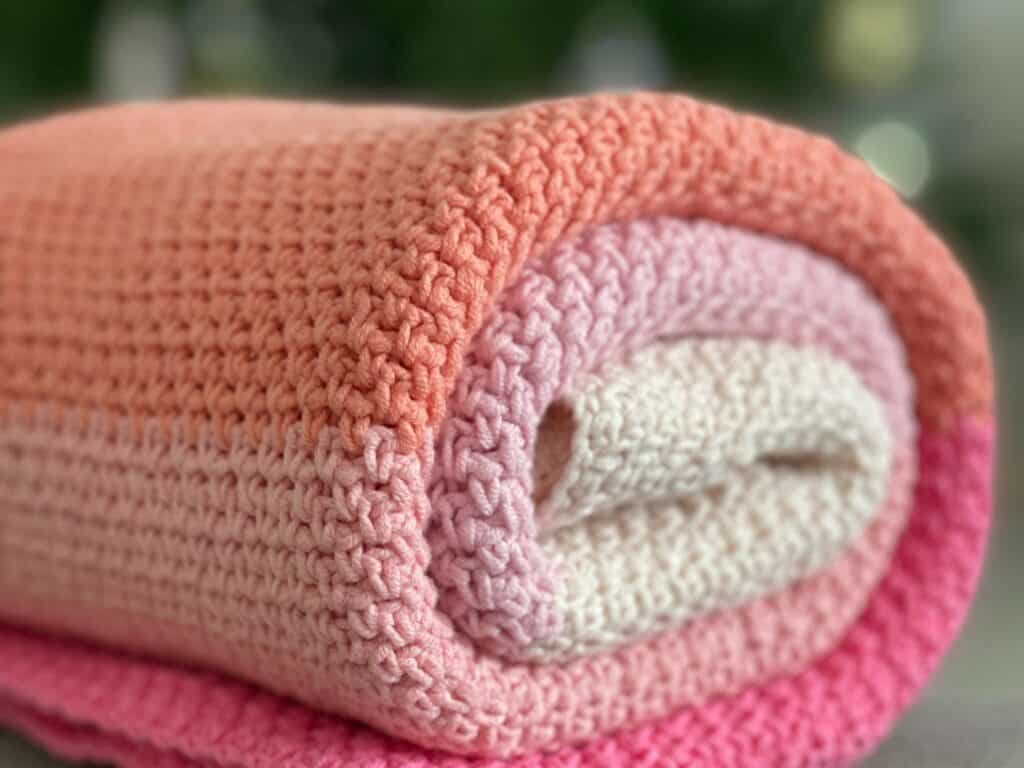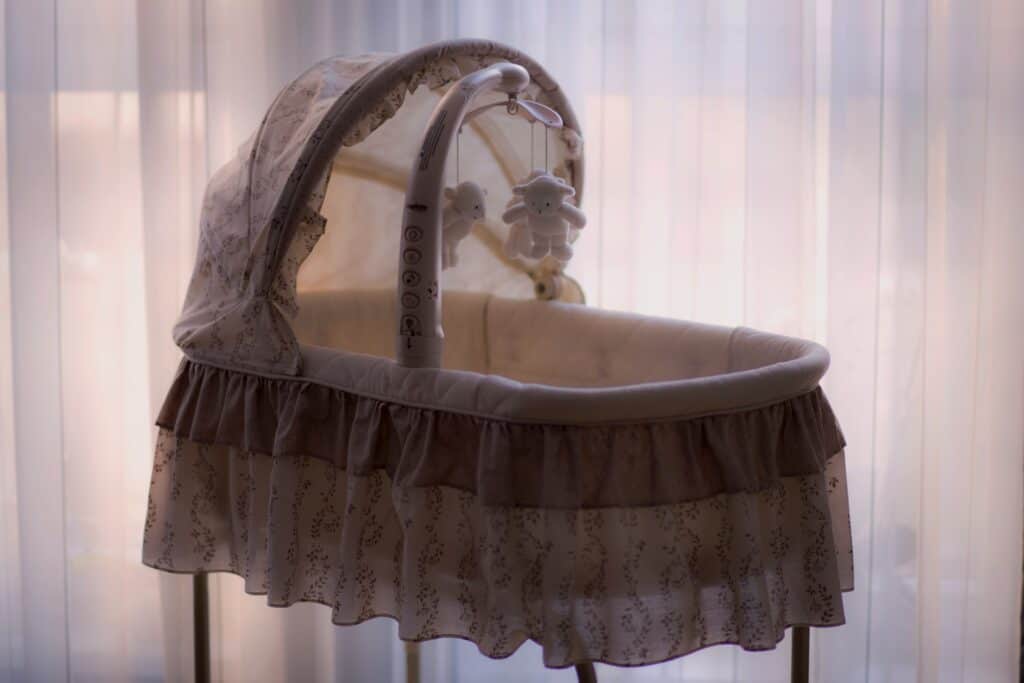Bassinets are a popular choice for newborns, offering a cozy and safe sleeping environment for babies. However, not all bassinets are created equal, and some may not provide the level of comfort your baby needs for a good night’s sleep.
Fortunately, there are several ways to make a bassinet more comfortable, ensuring your little one gets the rest they need to grow and thrive.
Understanding the basics of a bassinet is the first step in creating a comfortable sleeping environment. From choosing the right mattress to selecting suitable bedding, there are several factors to consider.
Safety is also a top priority, and parents must take precautions to ensure their baby’s sleeping space is secure and free from hazards. By following a few simple guidelines, you can create a cozy and comfortable space for your baby to sleep.
Key Takeaways
- Understanding the basics of a bassinet is crucial for creating a comfortable sleeping environment.
- Safety is a top priority when it comes to bassinet comfort.
- Choosing the right mattress and bedding is essential for ensuring a cozy and restful sleep.
Understanding the Basics of a Bassinet
A bassinet is a small, portable bed designed for newborns and infants. It is an essential piece of furniture for new parents who want to keep their little ones close by during the first few months of their lives.
Bassinets come in a variety of models and styles, ranging from basic to premium, and selecting a good-quality bassinet is important to ensure a comfortable sleep for the baby.
The primary purpose of a bassinet is to provide a safe and comfortable sleeping environment for the baby. They are typically made of lightweight materials, such as wood or plastic, and are designed to be easy to move around the house.
Many bassinets come with wheels or casters, making it easy to move the bed from room to room as needed.
When selecting a bassinet, parents should consider the size and weight of their baby, as well as the style and design of the bassinet. Some bassinets are designed to be more portable, while others are more stationary.
Premium bassinets may come with additional features, such as adjustable height settings, built-in music and vibration, and more.
It is important to note that a bassinet is only suitable for newborns and infants up to a certain weight and age limit.
As the baby grows and becomes more active, a crib will be necessary to provide a safe sleeping environment. Parents should always follow the manufacturer’s guidelines for weight and age limits when using a bassinet.
In summary, a bassinet is a valuable piece of furniture for new parents looking to provide a safe and comfortable sleeping environment for their newborns and infants.
When selecting a bassinet, parents should consider the size and weight of their baby, the style and design of the bassinet, and any additional features that may be important to them.
Choosing the Right Mattress
Choosing the right mattress is crucial to making a bassinet more comfortable for your baby. A good mattress provides support and comfort, which is essential for your baby’s growth and development.
Here are some factors to consider when choosing the right mattress for your bassinet:
Size and Fit
The mattress should fit snugly inside the bassinet, leaving no gaps between the mattress and the sides of the bassinet. A mattress that is too small or too big can be dangerous for your baby. Make sure to measure the bassinet and choose a mattress that fits perfectly.
Firmness
A firm mattress is recommended for babies as it provides the necessary support for their growing bodies. Soft mattresses can be dangerous as they increase the risk of suffocation and Sudden Infant Death Syndrome (SIDS).
When choosing a mattress, press down on it to check its firmness. It should not sink too much under your weight.
Material
The material of the mattress is also important. Organic cotton or wool mattresses are good choices as they are free from harmful chemicals and toxins. Foam mattresses can also be a good option, but make sure to choose one that is firm and has a high-density foam.
Mattress Pad and Topper
Using a mattress pad or topper can make the bassinet more comfortable for your baby. A mattress pad provides an extra layer of cushioning, while a topper can add more support. When choosing a mattress pad or topper, make sure it fits the bassinet and the mattress snugly.
In conclusion, choosing the right mattress is essential to make a bassinet more comfortable for your baby. A firm mattress that fits snugly inside the bassinet and is made of safe materials is the best choice. Using a mattress pad or topper can also add more comfort and support.
Selecting Suitable Bedding
One of the most important aspects of making a bassinet more comfortable for your little one is selecting suitable bedding. When it comes to bedding, there are a few things to keep in mind to ensure your baby is safe, comfortable, and sleeping soundly.
First and foremost, it’s important to choose bedding that fits the bassinet snugly. Loose bedding can pose a suffocation risk for infants. Opt for fitted sheets that are specifically designed for bassinets. This will ensure a secure fit and reduce the risk of entanglement.
When selecting sheets, look for breathable materials such as cotton or bamboo. These materials are soft and comfortable for your baby, and they allow air to circulate, reducing the risk of overheating.
In addition to sheets, you may also want to consider using a swaddle or swaddling blanket. Swaddling can help your baby feel secure and comfortable, and it can also prevent them from startling themselves awake.
Look for swaddles or swaddling blankets made from breathable materials and ensure that they are not too tight.
Finally, when it comes to blankets, it’s important to remember that less is more. While a blanket can provide warmth and comfort, too many blankets can pose a suffocation risk.
Opt for a single lightweight blanket made from breathable material, and ensure that it is tucked in securely around your baby.
By selecting suitable bedding for your bassinet, you can help ensure that your little one is safe, comfortable, and sleeping soundly.
Ensuring Safety and Comfort
When it comes to bassinet safety, there are a few key things to keep in mind. The American Academy of Pediatrics (AAP) recommends that babies sleep on their backs on a firm, flat surface with no soft bedding or toys. This reduces the risk of Sudden Infant Death Syndrome (SIDS) and suffocation.
To make a bassinet more comfortable, there are a few steps you can take while still ensuring safety. First, use a firm mattress that fits snugly in the bassinet.
This will provide the necessary support for your baby’s developing spine. Avoid using any padding, as it can increase the risk of suffocation.
Next, consider the temperature of the room. Overheating is a risk factor for SIDS, so it’s important to keep your baby at a comfortable temperature.
Dress your baby in lightweight clothing and use a light blanket if necessary. Avoid using heavy blankets or placing the bassinet near a heat source.
Finally, make sure the bassinet is secure and free of hazards. Check that all screws and bolts are tightened and that there are no loose parts. Keep the bassinet away from curtains, blinds, and cords, which could pose a strangulation risk.
By following these guidelines, you can ensure that your baby’s bassinet is both safe and comfortable.
Regulating the Temperature
A comfortable temperature is crucial for a baby’s sound sleep. A bassinet that is too warm or too cold can cause discomfort and disrupt the baby’s sleep.
Here are a few tips to regulate the temperature in the bassinet:
-
Check the room temperature: It’s essential to ensure that the room temperature is suitable for the baby. The ideal room temperature for a baby is between 68 to 72 degrees Fahrenheit (20 to 22 degrees Celsius). Use a room thermometer to monitor the temperature and adjust accordingly.
-
Choose the right bedding: The bedding material can also affect the temperature in the bassinet. Choose breathable fabrics like cotton or muslin that allow air to circulate and prevent overheating. Avoid using heavy blankets or comforters that can trap heat.
-
Use a swaddle: Swaddling can help regulate the baby’s body temperature and prevent overheating. Use a lightweight swaddle made of breathable fabric to wrap the baby snugly but not too tightly.
-
Adjust clothing layers: Dress the baby in layers to regulate their body temperature. Use a onesie or a sleeper as a base layer and add a lightweight swaddle or a sleep sack if needed. Remove or add layers as necessary to maintain a comfortable temperature.
-
Use a fan or air conditioner: If the room temperature is too warm, use a fan or air conditioner to circulate the air and cool down the room. Keep the airflow away from the baby and ensure that the temperature is not too cold.
By following these tips, parents can regulate the temperature in the bassinet and ensure that their baby sleeps comfortably and safely.
The Role of Swaddling
Swaddling is an age-old technique that has been used for centuries to help soothe and calm babies. It involves wrapping a baby snugly in a blanket, mimicking the feeling of being in the womb. Swaddling can help babies sleep better, reduce their startle reflex, and prevent them from scratching their face.
There are different types of swaddles available in the market, including swaddles with velcro or zipper closures. These swaddles make it easier for parents to wrap their babies securely and snugly. They also prevent the blanket from coming undone and posing a suffocation risk.
When swaddling a baby, it is important to ensure that the swaddle is not too tight or too loose. A tight swaddle can restrict the baby’s movement and increase the risk of hip dysplasia, while a loose swaddle can come undone and pose a suffocation risk.
It is also important to stop swaddling a baby once they start rolling over, as swaddling can increase the risk of Sudden Infant Death Syndrome (SIDS) in this position.
In summary, swaddling can be a useful technique to help soothe and calm babies. Parents should choose a swaddle that is easy to use and secure, and ensure that it is not too tight or too loose. Swaddling should also be stopped once the baby starts rolling over to reduce the risk of SIDS.
Creating a Soothing Sleep Environment
Creating a soothing sleep environment is essential for a baby’s overall sleep quality. A comfortable bassinet is the first step towards ensuring that your baby gets a good night’s sleep. Here are a few tips to help you create a soothing sleep environment for your baby:
Sleep Sacks
Using a sleep sack can help your baby feel warm and secure, making them more comfortable and promoting better sleep. Sleep sacks are available in different materials and sizes, so it’s important to choose one that’s appropriate for your baby’s age and weight.
White Noise and Soothing Sounds
White noise and soothing sounds can help drown out any distracting noises and create a calming environment.
There are various white noise machines and apps available that can play different sounds such as rain, ocean waves, or even a heartbeat. Lullabies and other soothing sounds can also be played to help your baby fall asleep.
Nightlight
A nightlight can provide a soft and comforting glow, making your baby feel more secure in their sleep environment. It can also be helpful during nighttime feedings or diaper changes, as it provides enough light to see what you’re doing without being too bright and disruptive.
Dark Environment
On the other hand, some babies may prefer a completely dark environment to sleep in. Using blackout curtains or shades can help create a dark environment that promotes better sleep.
By following these tips, you can create a soothing sleep environment that promotes better sleep quality for your baby.
Considerations for Co-Sleeping
When it comes to co-sleeping with a newborn, there are a few important considerations to keep in mind. Co-sleeping can provide a sense of security and comfort for both the baby and the parents, but it’s important to take the necessary precautions to ensure a safe sleeping environment.
One popular option for co-sleeping is a co-sleeper bassinet. These bassinets attach to the side of the bed, allowing the baby to sleep close to the parents while still having their own separate sleeping space.
When using a co-sleeper bassinet, it’s important to ensure that it is securely attached to the bed and that there are no gaps or spaces where the baby could become trapped.
Another option for co-sleeping is room-sharing. This involves placing the baby’s crib or bassinet in the same room as the parents. Room-sharing can provide a sense of closeness and security for both the baby and the parents, while still allowing for separate sleeping spaces.
Regardless of whether you choose to use a co-sleeper bassinet or room-sharing, it’s important to ensure that the baby is placed on their back to sleep, on a firm and flat surface. Soft bedding, such as blankets, pillows, and stuffed animals, should be avoided in the baby’s sleeping area.
Proximity to mom can also play a role in co-sleeping. If the mother is breastfeeding, having the baby close by can make nighttime feedings easier and more convenient. However, it’s important to ensure that the baby is not at risk of suffocation or overheating.
Overall, co-sleeping can provide a sense of comfort and security for both the baby and the parents. By taking the necessary precautions and ensuring a safe sleeping environment, co-sleeping can be a viable option for families looking to keep their newborn close at night.
Additional Comfort Features
Aside from the basic features of a bassinet, there are additional comfort features that can make a big difference in ensuring that your baby sleeps soundly. Here are some of the most important features to consider:
Pillows and Cushions
Pillows and cushions can provide extra support and comfort for your baby. However, it’s important to make sure that they are placed correctly and not too close to your baby’s face.
The American Academy of Pediatrics recommends that parents avoid using pillows or cushions in the bassinet for infants younger than one year old.
Adjustable Height
Many bassinets now come with adjustable height features, which can be very helpful for parents. This feature allows you to adjust the height of the bassinet to make it easier to reach your baby, especially if you have a C-section or are recovering from childbirth.
Padding and Snugly Fit
A well-padded bassinet can provide extra comfort for your baby. It’s important to make sure that the padding is not too thick or soft, as this can pose a suffocation hazard. Additionally, a snugly fitting bassinet can help your baby feel more secure and comfortable.
Bassinet Cover
A bassinet cover can help keep your baby warm and cozy while they sleep. Look for a cover that is made from breathable materials and fits snugly over the bassinet. It’s important to make sure that the cover is not too thick or heavy, as this can pose a suffocation hazard.
Overall, adding these additional comfort features to your bassinet can help your baby sleep more soundly and comfortably. However, it’s important to always follow safe sleep guidelines to ensure your baby’s safety.
Understanding Your Baby’s Needs
When it comes to making a bassinet more comfortable for your baby, it’s essential to understand their needs.
Babies can be fussy and distressed, especially if they are experiencing reflux or other feeding issues. As new parents, it’s important to pay attention to your baby’s cues and respond accordingly.
One of the first things to consider is your baby’s feeding timer. Babies need to eat frequently, and if they’re not getting enough milk or formula, they may become fussy or distressed.
It’s essential to keep track of when your baby last fed and offer them food when they show signs of hunger.
In addition to feeding, babies also need a comfortable sleeping environment. A bassinet with a firm mattress and breathable bedding can help your baby sleep soundly. It’s also essential to keep the bassinet clean and free from any potential hazards.
If your baby is experiencing reflux or other feeding issues, there are several things you can do to make them more comfortable. Elevating the head of the bassinet can help reduce reflux symptoms, and feeding your baby smaller, more frequent meals can also help.
Overall, understanding your baby’s needs is crucial when it comes to making a bassinet more comfortable. By paying attention to your baby’s cues and responding accordingly, you can help ensure that they are happy, healthy, and well-rested.
Selecting Appropriate Accessories
When it comes to making a bassinet more comfortable, selecting appropriate accessories is key. The right accessories can help soothe your baby and create a cozy environment for them to sleep in.
Here are some tips for selecting the right accessories for your bassinet:
Stuffed Animals and Toys
Stuffed animals and toys can provide comfort and entertainment for your baby. However, it’s important to choose items that are safe and appropriate for a bassinet.
Look for toys that are soft, lightweight, and free of small parts that could be a choking hazard. Avoid toys that are too big or heavy, as they could pose a suffocation risk.
Mobiles
A mobile can be a great way to soothe your baby and provide visual stimulation. Look for a mobile that is easy to attach and remove, and that has a variety of colors and textures. Avoid mobiles with small parts or strings that could pose a choking hazard.
Halo Bassinet and Snoo Smart Sleeper
If you have a Halo Bassinet or Snoo Smart Sleeper, there are a variety of accessories available to make your baby more comfortable. These include mattress pads, sheets, and swaddles designed specifically for these bassinets. Be sure to choose accessories that are compatible with your specific model.
Bumper Pads
Bumper pads are designed to prevent your baby from bumping their head on the sides of the bassinet. However, they can pose a suffocation risk if they become loose or detached.
If you choose to use bumper pads, make sure they are securely attached and that your baby cannot get tangled in them.
Overall, when selecting accessories for your bassinet, safety should be your top priority. Choose items that are appropriate for your baby’s age and development, and that are designed to be used with a bassinet.
With the right accessories, you can create a cozy and comfortable environment for your baby to sleep in.
Related post: Exersaucer Age Limit
Frequently Asked Questions
How can I make my baby more comfortable in a bassinet?
To make your baby more comfortable in a bassinet, you can consider adding a few items to the bassinet. A swaddle or sleep sack can help your baby feel snug and secure.
You can also add a small pillow or wedge to elevate your baby’s head slightly, which can help with reflux or congestion. Additionally, adding a white noise machine or a mobile can help soothe your baby and create a calming environment.
What are some tips for setting up a bassinet for a newborn?
When setting up a bassinet for a newborn, it is important to ensure that the bassinet is placed on a stable surface and that it is free from any potential hazards.
You should also make sure that the bassinet is properly assembled and that the mattress is firm and fits snugly in the bassinet. Additionally, you should avoid placing any loose bedding or toys in the bassinet.
What kind of mattress pad should I use for a bassinet?
It is recommended to use a firm and flat mattress pad in a bassinet. This can help reduce the risk of Sudden Infant Death Syndrome (SIDS) and other sleep-related hazards. You can also consider using a waterproof mattress pad to protect the mattress from spills or accidents.
Are there specific sheets that are best for a bassinet?
It is recommended to use fitted sheets that are specifically designed for a bassinet. These sheets should fit snugly on the mattress and should not come loose or bunch up. You should also avoid using any loose bedding or blankets in the bassinet.
Can a blanket be used to make a bassinet more comfortable for a baby?
It is not recommended to use blankets in a bassinet as they can pose a suffocation hazard. If you want to keep your baby warm, you can consider using a swaddle or sleep sack instead.
What are some common reasons why a newborn might be fussy in a bassinet?
There are several reasons why a newborn might be fussy in a bassinet. Some common reasons include hunger, a dirty diaper, discomfort, or overstimulation.
You can try to address these issues by feeding your baby, changing their diaper, adjusting their clothing or bedding, or creating a calm and soothing environment.

Nurse Practitioner at Venus Med Spa

